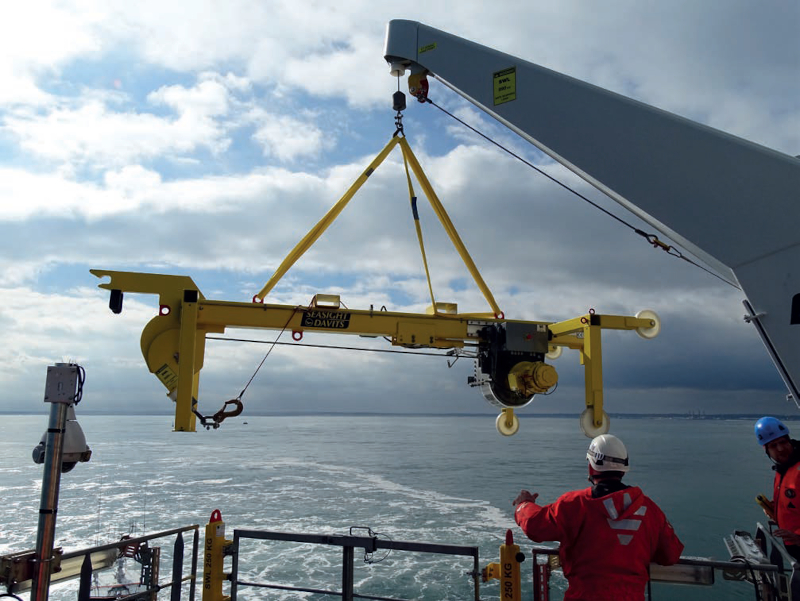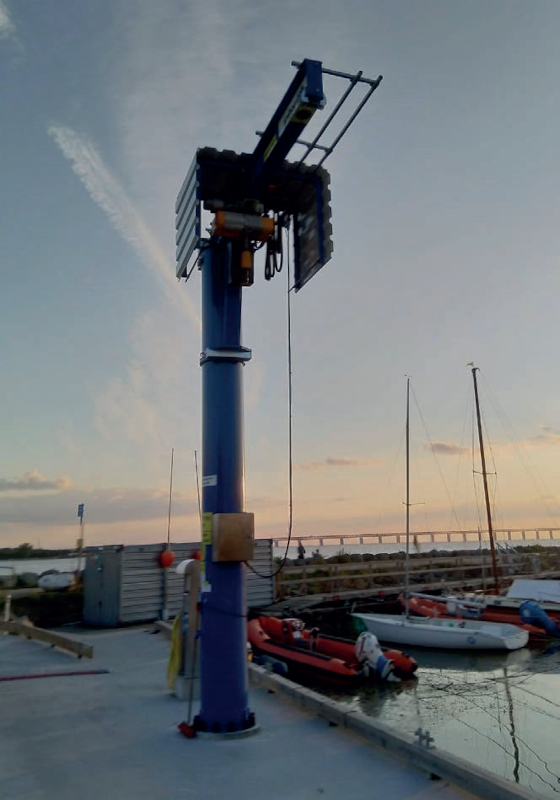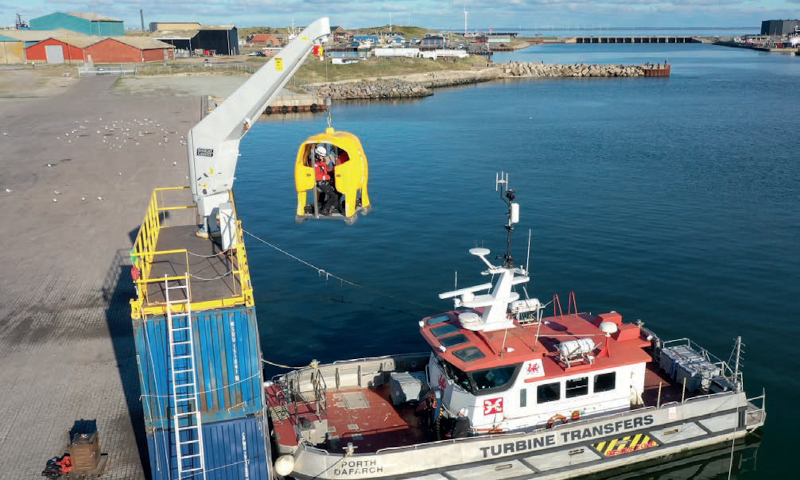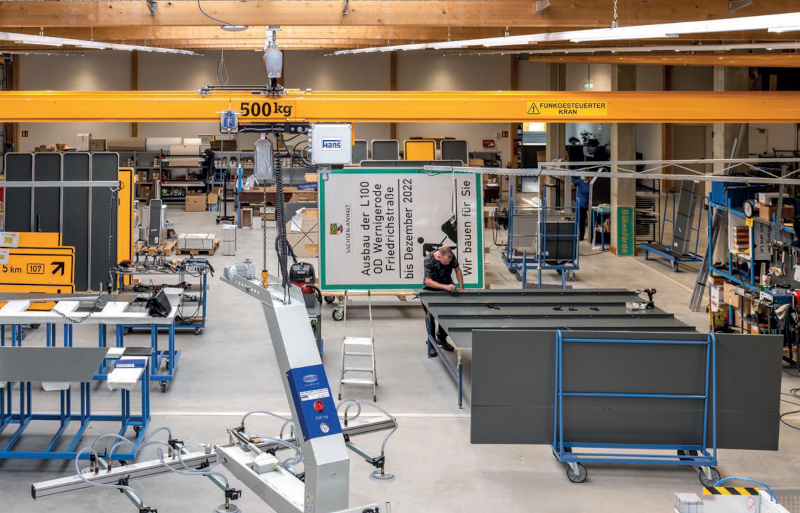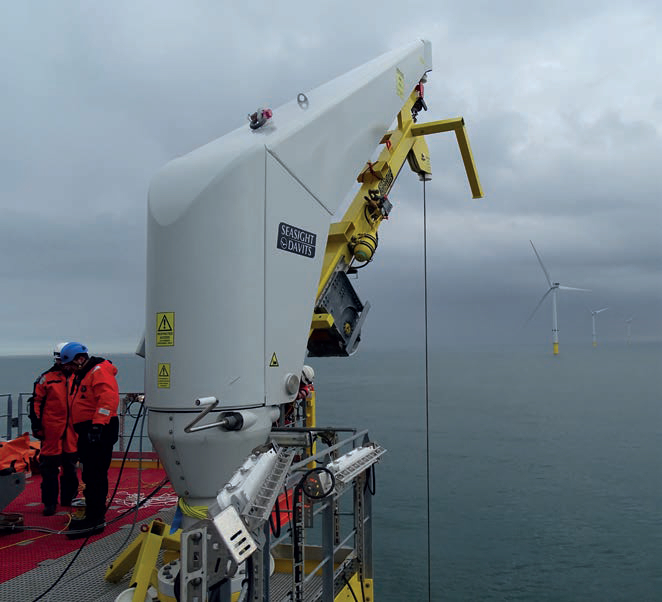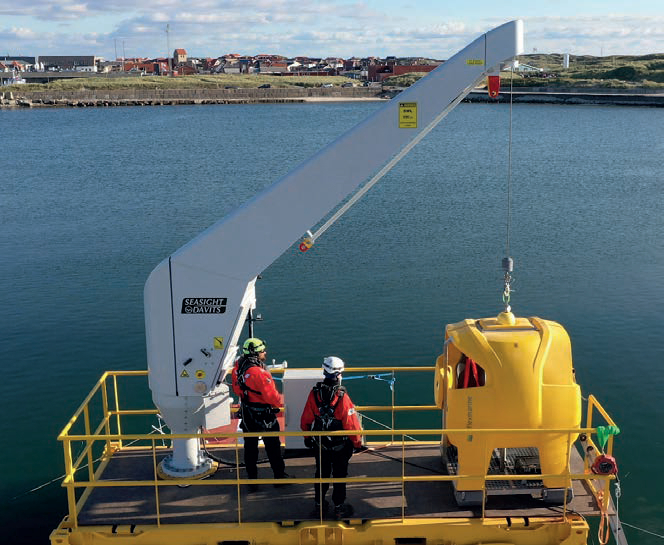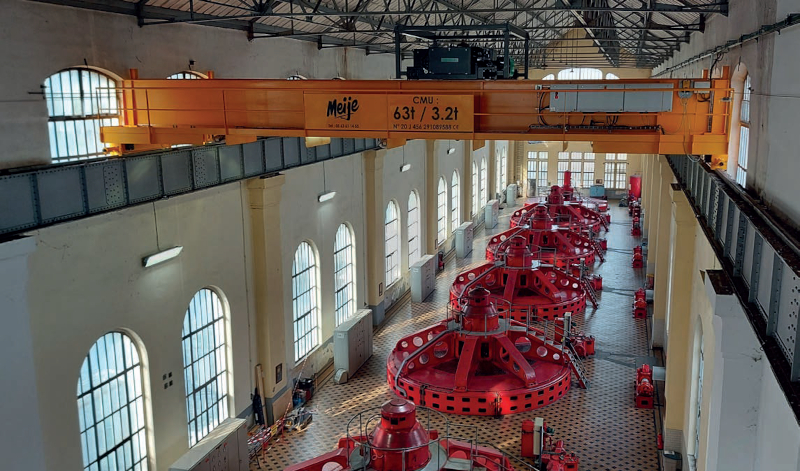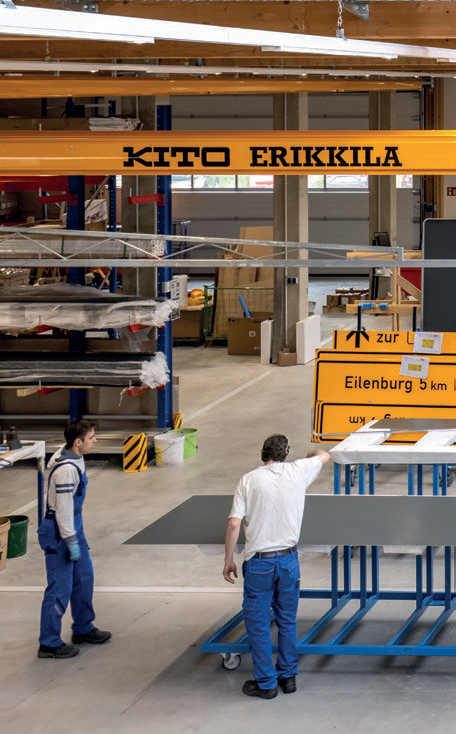Centre of attention
10 February 2022As we await the delayed LogiMAT exhibition at the end of May, Julian Champkin surveys some Central European manufacturers and their products.
The LogiMAT trade show in Stuttgart, Germany, has for many years been the showcase for European hoist makers to display their new products and their recent achievements. Last year’s show of course had to be postponed, for safety reasons. The organisers hoped to put it on in March this year (2022), but once again the virus has forced another postponement; the show is now scheduled for May 31–June 2, 2022, with its digital platform extended until June 28. Meanwhile, though, central European manufacturers have still been producing hoists and setting them to work. Here are some examples.
LIFTKET
"Customisation is a big topic on the customer side,” says Jürgen Dlugi, managing director, Liftket Hoffmann. Since the construction of its plant in 2018 the company, based near Leipzig, has especially expanded in that sector. “We are producing more and more special, tailor-made equipment based on our modular concepts," says Dlugi. "We have a very high vertical integration, which allows us to always find a good lifting solution. We are not just a brand - we design, develop, engineer, machine, manufacture and assemble the complete product ourselves with our own staff. This allows us to offer flexibility and safety. We know what we are doing, in other words: We can tell you which colleague builds which hoist with which material, and it all happens in our own factory."
A recent example is a project involving a boat lift in Malmö, Sweden, pictured right.
VERLINDE:
Verlinde are long-established French hoist makers. Its partner Meije has for 40 years been involved in the installation, repair and maintenance of lifting equipment at the Mauzac hydroelectric plant in the Dordogne.
The plant was opened in 1924 and several pieces of equipment dating from that period are still in use. An example was the overhead crane used for maintaining the turbines. As an early 20th-century design it operated with a single lifting speed and without a load limiter. Too old now and obsolete, it no longer met current safety standards. It also had design issues as it brushed against the plant wall when moving. Its use was suspended in 2019. As a temporary replacement, a mobile crane or jib crane was occasionally used – an expensive and unsatisfactory solution.
The hydroelectric plant therefore issued an invitation for bids. Because of the narrowness of the installation and of the potential difficulties for positioning, the invitation was initially simply for the retrofit of the overhead crane.
Given the structural and design flaws of the current machine, Meije responded by offering a complete replacement, rather than a refurbishment, for an equivalent budget. Having similar experience on another EDF (Électricité de France), electric utility company site, Meije was able to resolve installation difficulties.
It built a custom-designed overhead crane with an MWL of 63 tons, a span of 14.5m and a height of 12m. The crane is fitted with Verlinde Eurobloc VT5 hoists with two speeds for all directions, a load limiter and radio control.
Lighting of the work area by LED projectors and load readout were added at the customer’s request. An additional 3.2 ton auxiliary hook on a Verlinde Eurobloc VT2 hoist is there for small manoeuvres.
To tackle the installation challenges Meije assembled the crane outside the building and made an opening in the roof. The modern and down-sized design of the new overhead crane fits perfectly into the buildings, and unlike its predecessor it does not touch the walls.
Installation was completed in the Spring of 2021. The entire project took Meije only six months to design, manufacture and commission and the plant is once again fully serviceable with a practical, functional and standards-compliant overhead crane.
KITO
Meanwhile in Düsseldorf, Kito Europe has been helping to manufacture new traffic signs. In Germany there are over 500 different traffic sign designs but only a few companies are licensed to manufacture them. Criteria for the appearance and the condition of the signs are clearly defined, and construction follows strict quality management controls.
One producer is a traffic engineering company that specialises in vertical traffic signs, road names and cycle path signs. For optimal workflow various steps in the production process are done at different workstations.
Firstly, the traffic sign image is printed on a retroreflective foil. Depending on the size of the traffic sign – it can be over 50 m2 – one or more foil sheets are needed.
After that, the foil is cut to size and glued to a metal shield – either individually or in strips if it is a larger sign. Finally, all the sign parts are set next to each other and screwed together from behind. As each sign must be clearly legible, no errors may occur. All signs must be perfectly aligned from front and back.
There are different workstations for each production step. Every large sign must be turned around and safely moved during processing. Lifting installation experts Hans-Hebetechnik + Metallbau solved this challenge by connecting several lifting elements together. A Kito ER2 electric chain hoist carries a vacuum lifting device, and both are attached to a double-girder crane from Erikkila.
The vacuum lifter, a VacuMaster Comfort from J.Schmalz, can rotate the heavy and large loads through more than 180° to turn the signs around during production. Lifted by the hoist and transported by the crane, the vacuum lifter is used at one workstation to pick up and rotate the traffic signs, and can also position them precisely at the next workstation. The Kito chain hoist on the Erikkila crane track in combination give smooth movement of the 150kg vacuum lifting device without load swing. The die-cast aluminium body of the hoist protects an electromagnetic brake, a frequency inverter and a friction clutch.
Both the Kito ER2 and the Schmalz VacuMaster Comfort get their energy supply from an external electronic trolley. An innovation is that the chain hoist is not operated via its own control system but directly from the panel of the vacuum lifting device. Crane and trolley movements, lifting and slewing are controlled in this way.
SEASIGHT DAVITS
Seasight Davits of Ringkøbing in Denmark specialise, as the name suggests, in maritime lifting apparatus. Founded in 2011, it is currently setting up a third subsidiary in the US in addition to the ones already established in the UK in 2019 and in Taiwan last year. It also recently established a partnership in Japan, with Sojitz Machinery.
Windfarm hoists are proving a particular niche for them: in 2021 alone its products were sold and went into production for the Hollandse Kust Nord windfarm off the north Dutch Coast, Arcadis Ost 1 in the Baltic, and the Zhong Neng windfarm off Tawan.
Its original product, the Titan, has fixed outreaches from 3 to 5 meters according to specifications and WLL from 1 to 3 tons. The larger Hercules has hydraulic luffing, so it can cover the whole spectrum of the platform, with maximum outreach available from 6 to 10 meters.
The company recently launched the Spider, an upgrade of its davit crane with a transfer basket.
“Spider is developed and designed with safety as a top-priority. And as it is basically an upgrade of our original davit crane, it gives our customers significant economic advantages; among others because it eliminates the need for separate personnel-transfer systems and gives access to the turbine platforms without using ladders and boat landings, which the developers already have started to leave out or remove,” explains Jimmy Damsgaard, CEO, Seasight Davits.
The oil and gas industry has used transfer baskets for offshore personnel-transfer since the 1970s. The Spider transfer-basket fits two persons at a time and is a scaled down version of those used in the oil and gas industry. It has the same advantages such as being fully self-rightening and floating in the water. And during the entire transfer, the personnel is sitting comfortably and protected as an alternative to relying on their personal safety harnesses.
“Using the transfer basket has already been proven safe for many years in the offshore oil and gas industry. Though, climbing ladders does not sound dangerous, it still comes with great risks due to the offshore conditions. And in addition to the transfer basket itself, there are also many know-how and training practices from the oil and gas industry which can be applied. This keeps the management of change cost low and gives the personnel using our products the comfort of a known and tried technology,” adds Damsgaard.
Davit cranes play an important role in an offshore wind farm as they transfer cargo such as tools and spare parts from the vessel to the wind turbine and back. Sometimes already in the construction phase, but otherwise for the annual services and inspections of the equipment and installations including the turbines.
“Offshore wind farms using Spider for personnel transfers will also have lower service and maintenance costs.
“Briefly explained, because servicing our man-riding crane does not take much longer than servicing our traditional cranes, which are needed on the turbine platform anyway. And there are no ladders or boat landings to be inspected and maintained,” said Damsgaard.
“Our product is based on the existing crane foundation, and it is therefore an option to upgrade our davit cranes on existing wind farms.”
For an entire wind farm, it is only necessary to have one remote control and one transfer basket. The remote control has a digital display, which is connected to cameras placed inside and outside the transfer basket, giving the crane operator on the vessel a good overview of the landing zone on the turbine platform as well as visual contact with the personnel being transferred.
Another unique remote-control feature allows the crane operator to activate the crane from the ship whilst under approach to the turbine foundation.
Seasight Davits started working on this solution already in 2013, but back then, the industry was not ready.
Now the product has passed a row of offshore testing with great success and is fully ready for market adaption. The first Seasight Davits Spider is already enroute for installation.
